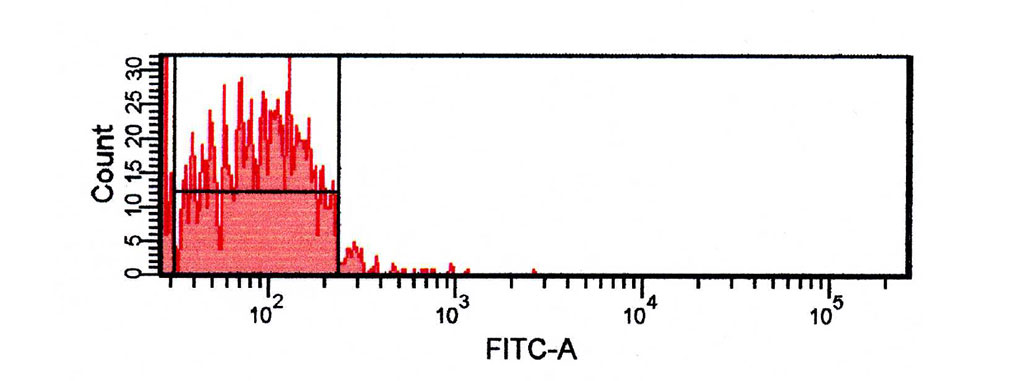I’m looking to do fluorescence quantitation using your Quantum MESF kits. One concern I had however was that my unlabeled cells have a lower fluorescence intensity than the blank bead. Why is that, and what do I do in this instance?
Posted: November 20, 2017

Our Quantum MESF and Quantum Simply Cellular beads are composed of polystyrene that have some level of autofluorescence varying based on the laser/channel in use. If you have control cells with lower MFI (mean fluorescence intensity) values than our blank bead, you’re more than welcome to substitute them in as the “blank” when using our QuickCal software. We provide the blank bead only as a convenience factor to help in establishing the lower detection limit. The blank doesn’t factor into the curve, rather it is read from it, much like a cell sample (a cell can certainly be used in place of the bead as a result).
Regardless of whether you substitute, it’s generally appropriate to subtract the MESF (not the MFI) of the unstained cells from the stained cells' MESF to correct for cellular autofluorescence (and thus contribution to estimated MESF). Do not however subtract the MESF of the control cells (or blank bead) from the fluorescent beads populations, as these were carefully calibrated in MESF units. Autofluorescence contribution of the beads in this respect is not of concern, as we’re indicating the bead’s total fluorescence is equivalent to a certain level of molecules of solubilized fluorochromes. This approach would also apply to our Quantum Simply Cellular product line (although instead of MESF units you’re working in ABC - antibody binding capacity). See PDS 821 for more details.
